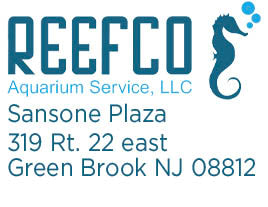Why Are Some Corals More Colorful Than Others?
Coral reefs are home to some of the most stunningly beautiful and diverse marine life on the planet. The vivid hues of coral have always attracted many divers and snorkelers to the world's reefs, and now corals are a popular display in our homes.
But have you ever wondered why some corals are more colorful than others?
In this article, we will explore the reasons why some corals are more colorful than others, how to enhance your corals’ colors, and the rarest colored corals.
Common Coral Colors
Coral is available in a range of colors, including red, orange, pink, green, blue, purple, and brown. These colors can be solid or mixed, and they can be used to create stunning patterns and textures. Some of the most common colors of coral are brown, green, and yellow.
These colors are usually due to the presence of algae that live inside the coral. The algae, which are known as zooxanthellae, use the coral's waste products to produce energy through photosynthesis. This process produces sugars that the coral can use for growth.
Red and orange corals are also common, and their color is due to the presence of pigments called carotenoids. These pigments are produced by the coral itself and are not related to the algae living inside it. In some species, carotenoids are produced in such large quantities that they can give the coral a fluorescent glow.
What is the Rarest Coral Color?
The rarest coral color is pure blue. While blue is a common color in the ocean, pure blue corals are extremely rare. This is because blue light penetrates the water less deeply than other colors, making it difficult for corals to produce the pigments needed to create a pure blue color.
While some corals appear blue, this is usually due to a combination of pigments that create a blue-green color.
How Do Corals Get Their Beautiful Coloration?

Corals get their color from a combination of pigments and the algae living inside their tissues.
The pigments are produced by the coral itself, while the algae produce pigments as part of the photosynthesis process.
The type and amount of pigments produced by the coral and the algae can vary depending on the species, the environment, and other factors. Let’s check them out!
Why Are Some Corals Different Colors?
Have you ever wondered why some corals have different colors? The answer lies in the symbiotic relationship between corals and algae. Corals are animals that form a mutually beneficial relationship with tiny algae called zooxanthellae.
These algae live within the coral's tissues and provide it with food through photosynthesis. In return, the coral provides the algae with protection and nutrients.
The color of corals is largely determined by the type and density of the zooxanthellae living within their tissues. The algae contain pigments that give the corals their characteristic colors.
For example, corals that are brown or green have high levels of chlorophyll in their zooxanthellae. Meanwhile, corals that are blue, purple, or red have pigments called carotenoids and phycobilins.
The amount of light that corals receive can also affect their color. Corals that live in shallow water receive more intense sunlight and have more colorful pigments to protect themselves from the sun's harmful UV rays.
In contrast, corals that live in deeper water have less pigmentation and appear more subdued in color. This is why it is important that you check the PAR level for your particular coral. For example, large polyp stony (LPS) corals require a lower PAR level than small polyp stony (SPS) corals.
Interestingly, stress can also affect the color of corals. When conditions change such as temperature or water quality, corals can expel their zooxanthellae, causing them to turn white.
This process is known as coral bleaching and is a significant threat to coral reefs worldwide. Bleached corals are more vulnerable to disease and mortality, and if the stressor persists for too long, they may not recover.

What Affects the Color of Corals?
The color of corals can be affected by a variety of factors. One of the most significant factors is the amount of light that the coral receives. Corals that receive more light tend to be more colorful, while those that receive less light are typically less colorful.
Water temperature can also affect the color of corals. If water temperatures get too high, the algae living inside the coral can die, causing the coral to bleach.
The presence of pollutants and other environmental stressors can also affect the color of corals. For example, exposure to excess nitrogen and phosphorus can cause an overgrowth of algae, making the coral appear greener. Similarly, exposure to heavy metals can cause the coral to turn brown or black.
How To Enhance Coral Coloration?
Enhancing coral coloration can be achieved through a range of techniques, including adjusting lighting, water temperature, and nutrient levels. For example, increasing the amount of light that a coral receives can help to enhance its color. Similarly, adjusting the water temperature to ensure that it remains within the optimal range for the species can also help to enhance its color.
Another way to enhance coral coloration is to provide the coral with the nutrients that it needs to thrive. This can be achieved through the use of specialized supplements that contain a range of vitamins, minerals, and other nutrients that are essential for coral growth and coloration.
Conclusion
The color of coral is a fascinating and complex subject that is still being studied by scientists around the world. While we have learned a lot about the factors that affect the color of corals, there is still much to be discovered.
By understanding the factors that influence coral coloration, you can ensure that your corals are given the right conditions to both thrive and make their colors pop inside your aquarium.
If you are looking for a colorful coral for your aquarium, do not hesitate to contact the Reefco Team.



